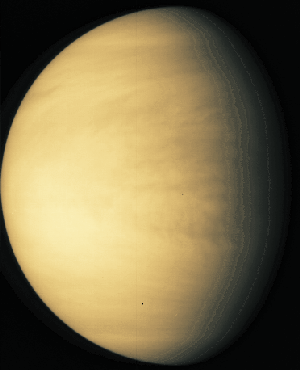Astronomy Picture of the Day
Discover the cosmos! Each day a different image or photograph of our fascinating universe is featured, along with a brief explanation written by a professional astronomer.
September 23, 1996

Venus: Earth's Cloudy Twin
Credit: Galileo
Spacecraft, JPL, NASA,
Copyright Calvin J. Hamilton